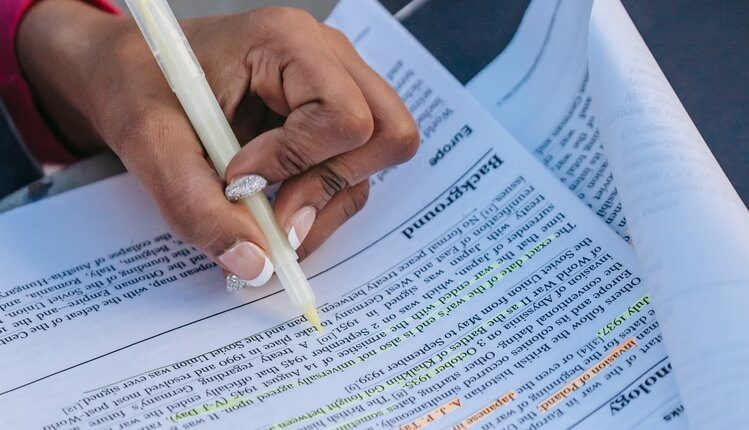How to Write an Abstract Within a Word Limit (Part 2)

In our last article, we covered all points related to writing the best first draft of an abstract and following the “avoid” checklist. Now, let’s move on to next step, where we’ll learn about how to polish your abstract to make sure it is crisp and meets the target.
Step 3: Revising and Editing
Revising and editing primarily serve the following three functions:
- Conciseness
- Flow and Logic
- Grammatical Accuracy
Unlike authors who primarily are in charge of ensuring accurate content in their paper, editors are specialists in eliminating repetition, maintaining flow and transition, and correcting grammar.
Conciseness
When you include parts of your paper into your abstract, you may find that although these simplify the meaning and make it easier to understand, you are doing nothing but adding extra words. Read your drafts carefully to avoid adding unnecessary words. Some tips to do this are given below:
1: Avoid using different words with the same meaning in one sentence
Incorrect: Thus, both two molecules of glyceraldehyde-3-phosphate are obtained from one molecule of glucose.
Correct: Thus, both molecules of glyceraldehyde-3-phosphate are obtained from one molecule of glucose.
2: Use direct verbs instead of complicated nouns
Incorrect: Our results are found to be in agreement with those of Xing et al.
Correct: Our results agree with those of Xing et al.
3: Avoid beginning sentences with “it is,” “there are,” etc.
Incorrect: There were five subjects who were chosen for the test.
Correct: Five subjects were chosen for the test.
Flow and Logic
After you revise for conciseness, you will also want to ensure that each sentence in your abstract transitions smoothly into the next.
1: Combine sentences so that the connections between ideas are logically clear
Incorrect: Evolved stars have mean molecular weight gradients. These gradients affect their entropy profiles.
Correct: Evolved stars have mean molecular weight gradients, which affect their entropy profiles.
2: Add or change transitional words and phrases
Incorrect: Abstracts for articles published before 1993 were created through digital scanning. That is, they may not exactly replicate the original text.
Correct: Abstracts for articles published before 1993 were created through digital scanning. They may therefore not exactly replicate the original text.
3: Look out for missing or contradictory text
Incorrect: Not every participant improves her/his self-efficacy through exercise. Our analysis suggests that subjects enjoyed the benefits of exercise for improving self-efficacy.
Correct: Not every participant improves her/his self-efficacy through exercise. However, our analysis suggests that some subjects enjoyed the benefits of exercise for improving self-efficacy.
Grammatical and Typographical Errors
Abstracts may be short but they are the first impressions of your paper, and therefore it is imperative that they are grammatically correct. Be sure to proof your abstract for grammatical inconsistencies and typographical errors.
1: Don’t cut articles (a, an, the)
Incorrect: Documenting precise nature of spillovers is crucial for determining advisability of such policies and contribution of learning to endogenous growth.
Correct: Documenting the precise nature of spillovers is crucial for determining the advisability of such policies and contribution of learning to endogenous growth.
2: Look out for number agreement
Incorrect: A great deal is known about the host and phage genes that operates in the lysis-lysogeny decision. Little is known, however, about its molecular mechanisms.
Correct: A great deal is known about the host and phage genes that operate in the lysis-lysogeny decision. Little is known, however, about their molecular mechanisms.
3: Count every enumeration
Incorrect: Each domain represents the magnitudes of the factors in one of the three dimensions: length, width, depth, and time.
Correct: Each domain represents the magnitudes of the factors in one of the four dimensions: length, width, depth, and time.
After following the above steps, put your abstract aside for a while, take a break, and then come back and re-read your draft. With a fresh eye, you’ll probably find new places to cut. Before you know it you will have a concisely written abstract.








